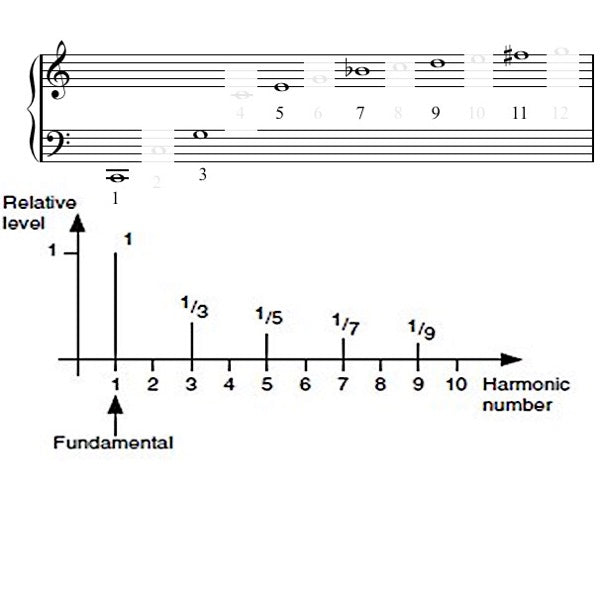
Dark tone vs Bright tone vs...?
Share
Good question from the mailbag this week:
I've been scavenging all over the Internet for more information on how to achieve a dark tone on the Bass Clarinet but what I got was a bunch of mixed information. Some say that it has to deal with how much bottom lip you use, while other sources say that it all depends on the mixture between what ligatures, reeds, and mouthpiece combinations. Thus I decided to get your opinion on how I may be able to achieve a dark tone. I would greatly appreciate your opinion on this. Thank you
Ps. I use rico reserve size 3 reed with a portnoy mouthpiece along with a vandoren optimum ligature.
So, here's the deal.
Dark and Bright are two terms we need to understand, and they refer to the amount of partials — harmonics — in the sound. And to understand that, you need to understand what partials are.
I'll simplify: Every note you hear has a fundamental (the note you're fingering), and then lots of other "notes" on top of it — just not as loud as the fundamental. Let's say you play a low C on a piano. You hear mostly that low C, but if you listen carefully, you'll hear a lot of other pitches mixed in on top of that note. Let's visualize:

You hear that low C, and then you hear an octave C above that, then a G, then an F, and so on. The relative volumes of those notes — called partials (think of them as being part of the note) — are what make that low C sound like it's coming from a Piano instead of a Trombone or Zither or Pan Flute.
Now, on Clarinet, we've got a special, unique set of partials. We skip every other partial! That's what gives our sound it's unique character. Here's what that same note would look/sound like for our sound:

Okay. So that's what makes clarinet unique, timbre-wise. (look up "Timbre" if you don't know the word. That's what Google is for)
Now that you understand that, the rest is simple: a "Dark sound" is simply lower volumes of the upper partials in relation to the lower partials and fundamental. A "Pingy sound" is one that has a lot of mid-range partials in relation to the upper and lower partials. And a "Bright sound" is one that has a lot of upper partials. Make sense?
How to get those partials cooking in the right amounts has everything to do with your mouthpiece and reed combination. Some mouthpieces are built for softer reeds, some for harder reeds. The inside of your mouthpiece also has a lot to do with the "character" (bright, ping, dark) of your sound. And the type of reed has a huge impact on your sound as well — and REEDS AND MOUTHPIECES GO TOGETHER. (Yes, not every mouthpiece will be able to play on the reeds you have. Seriously.)
So experiment with reed and mouthpiece combinations. If you're near New York City, Vandoren has a studio you can visit where you can literally try every mouthpiece they make, and they'll help you choose the right reed for each mouthpiece. And it's free. Once you get something you like, you buy it, and you're off to the races. If you're interested in getting their contact info, just email me.
Hope this helps!
Mike


1 comentário
Thank you for sharing your knowledge and experience here Michael. I’ve heard these terms all my life (well back in the last century) and never has someone made the difference in musically Dark and Bright so thoroughly easy to understand. I would like to use your explanation and diagrams for students when the need next arises.